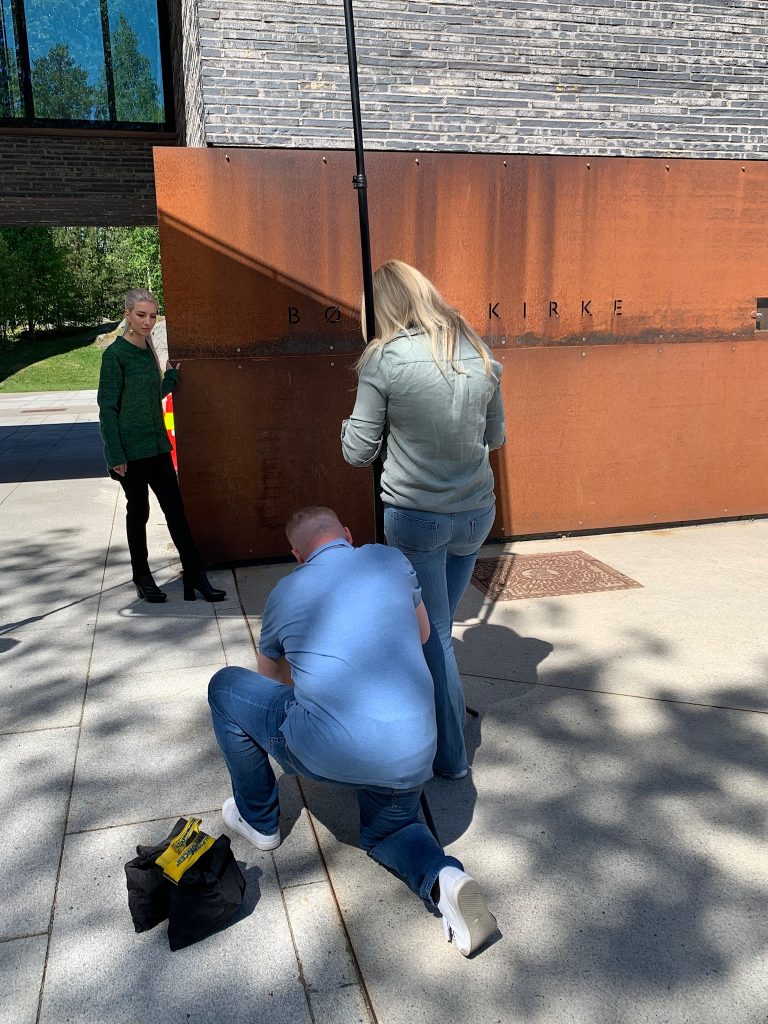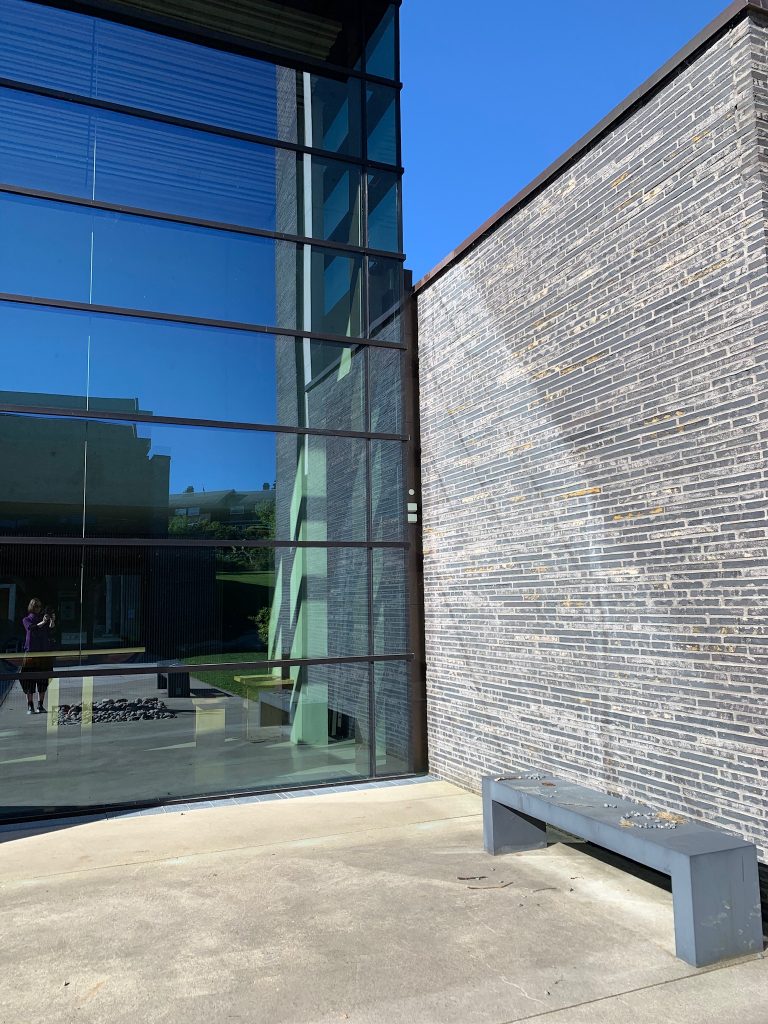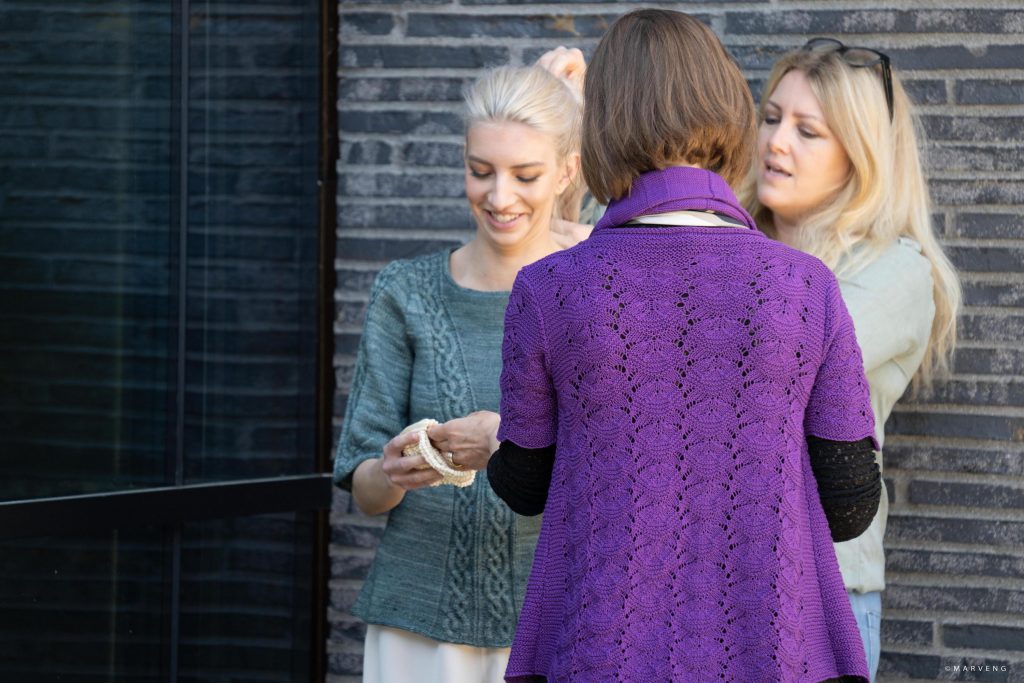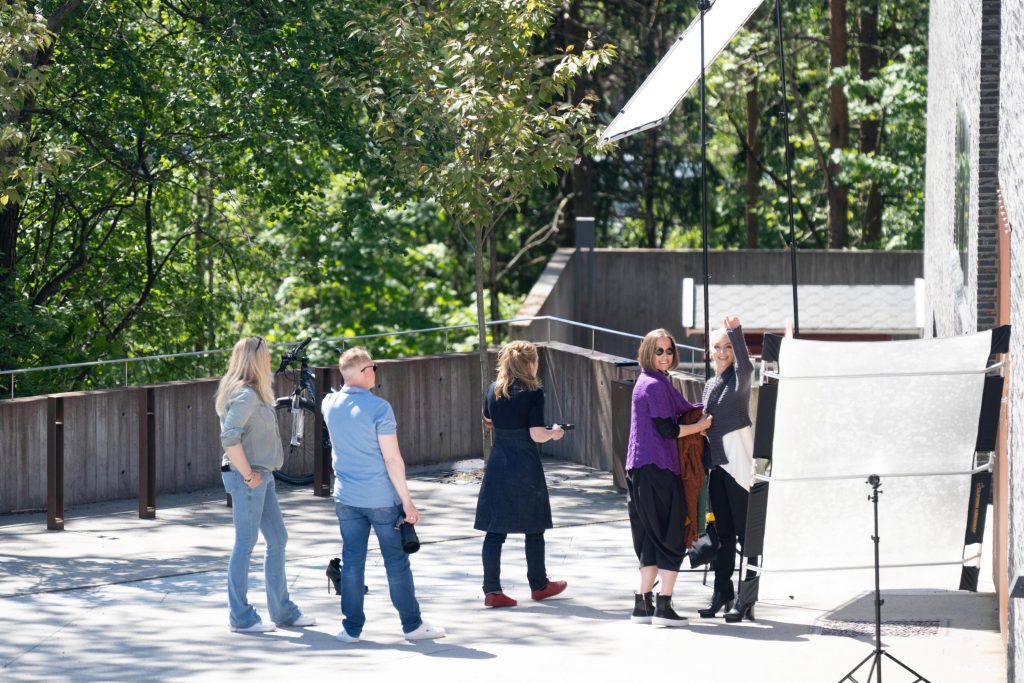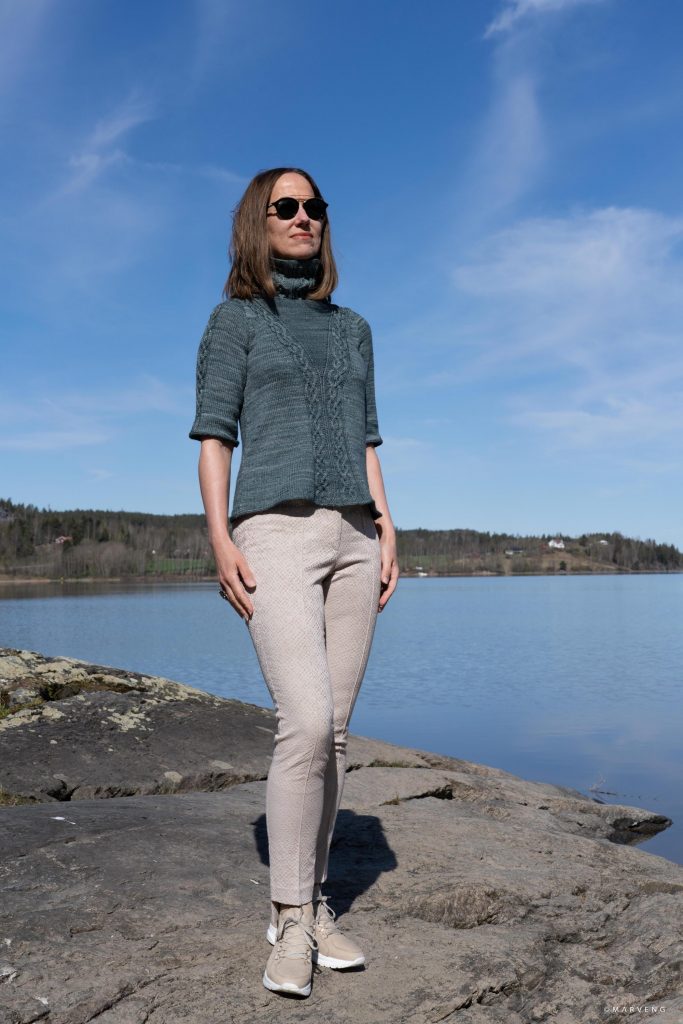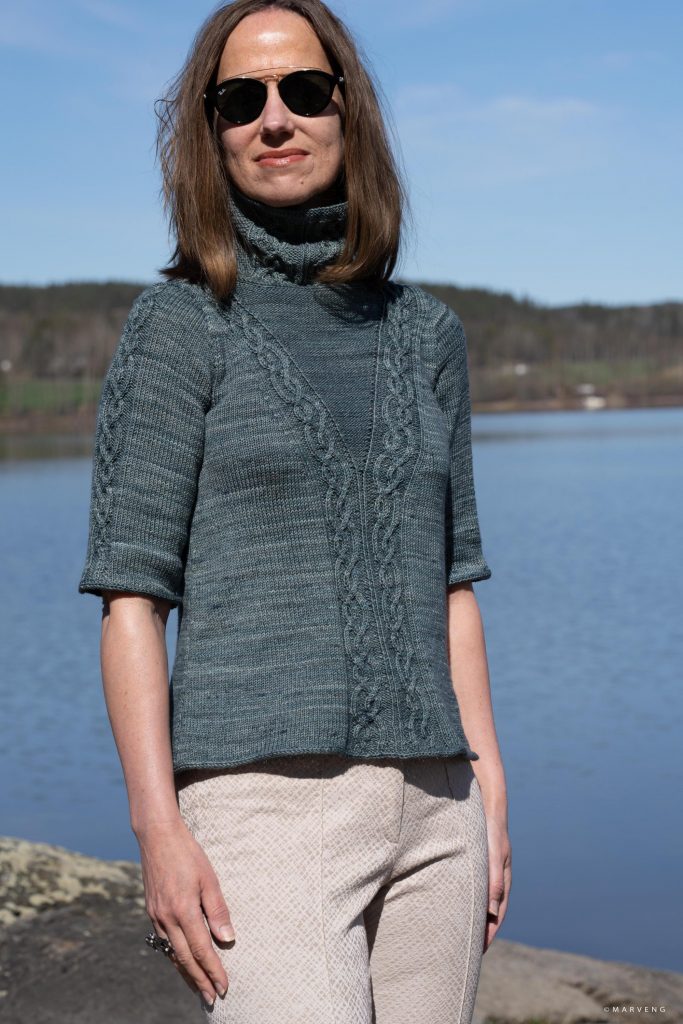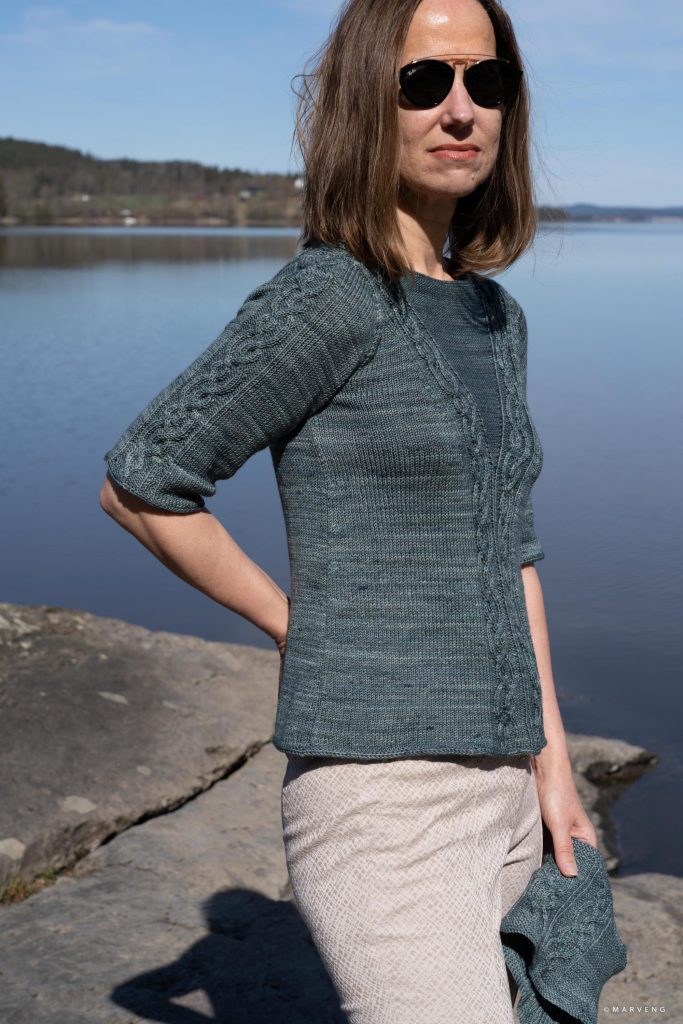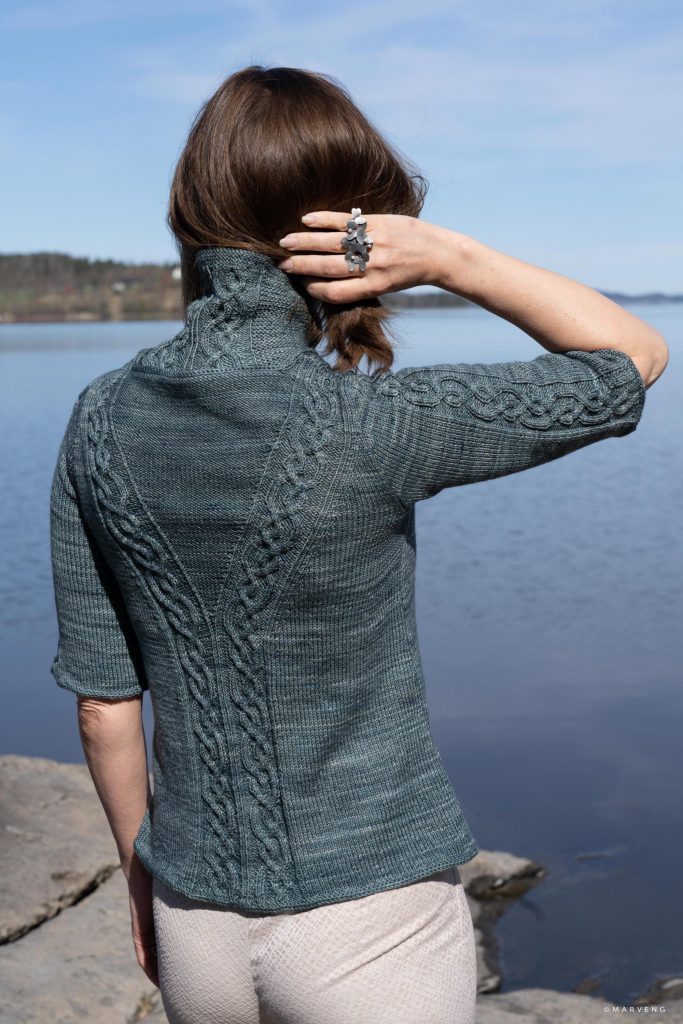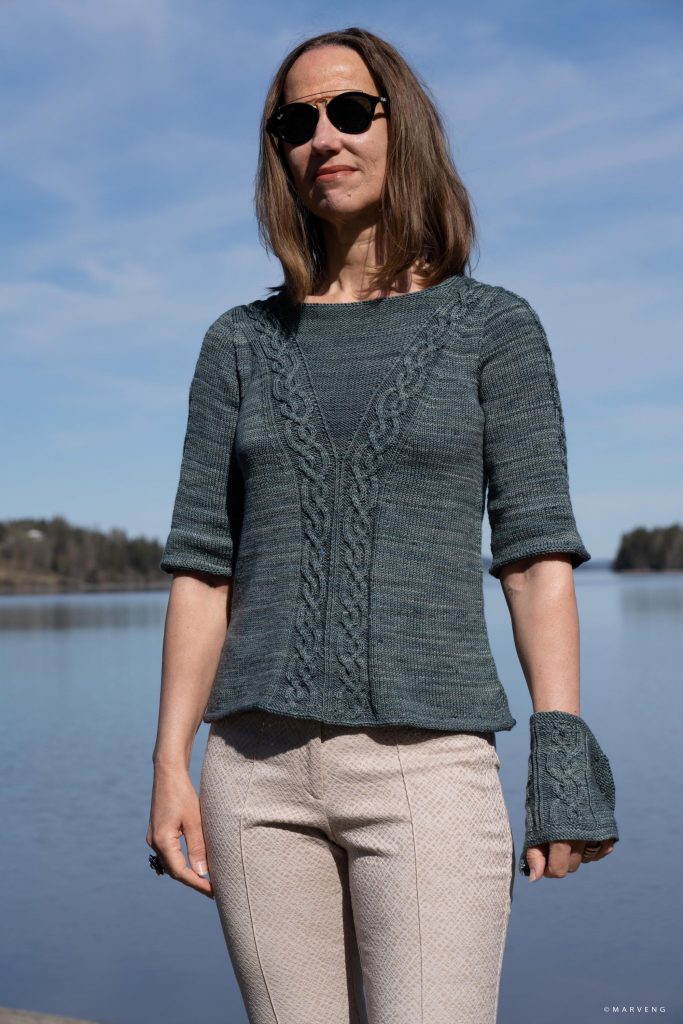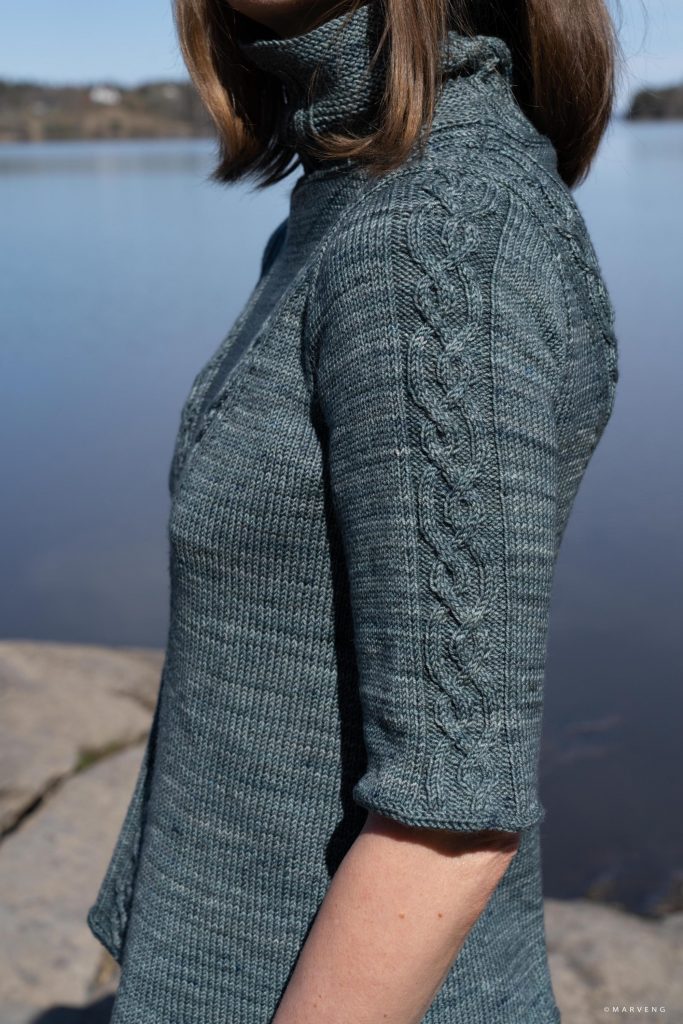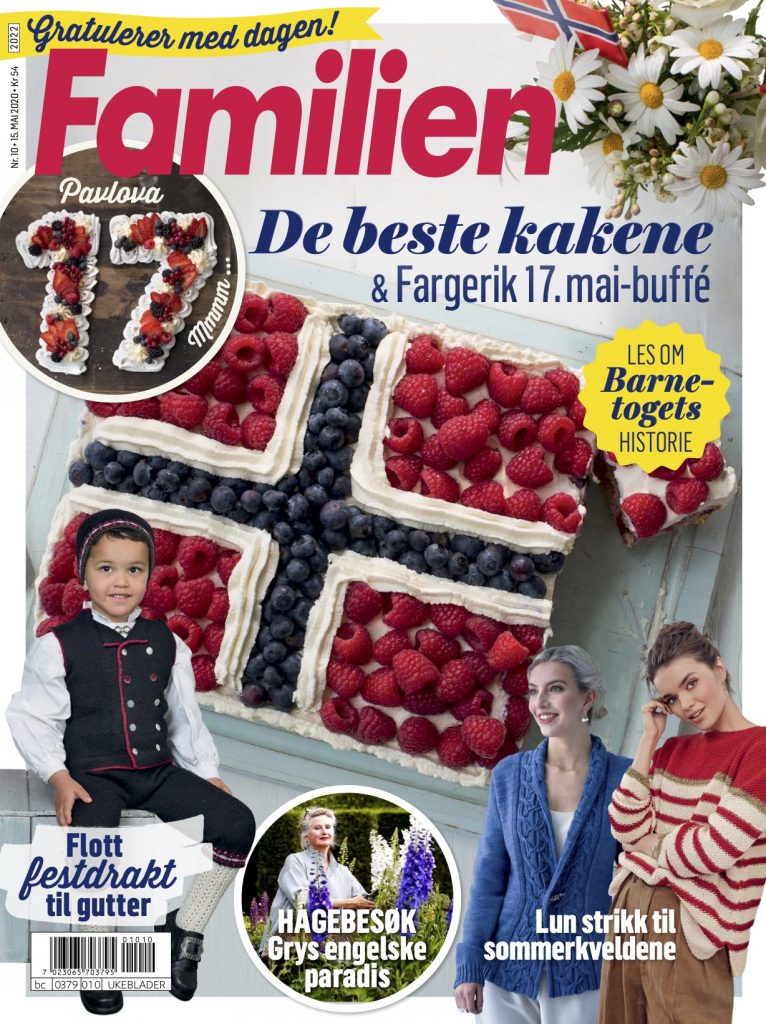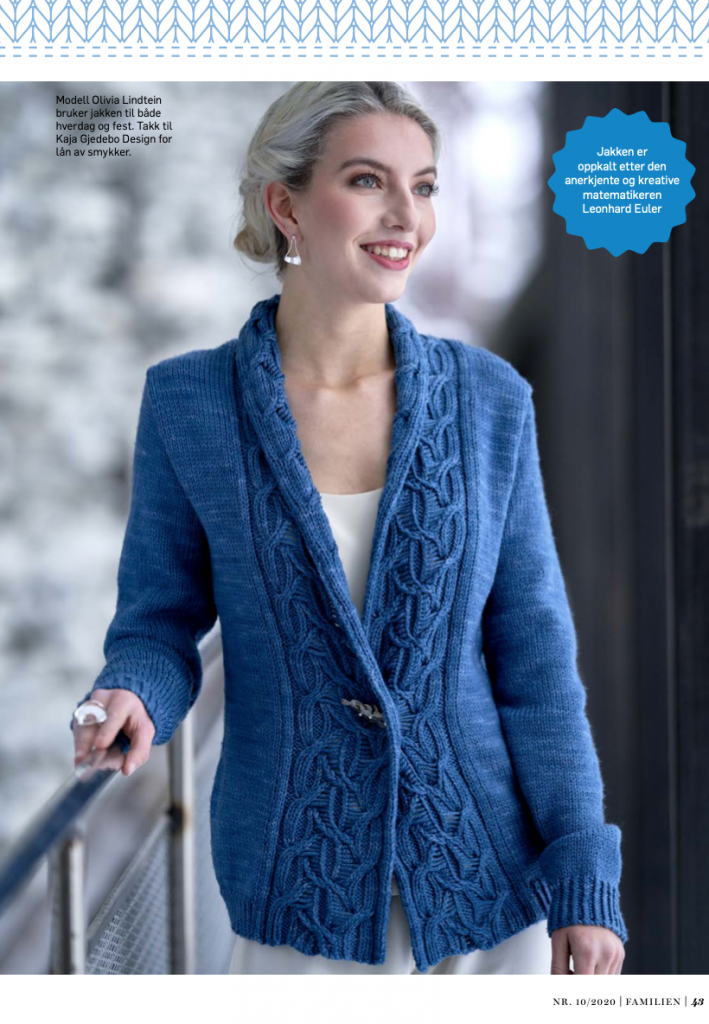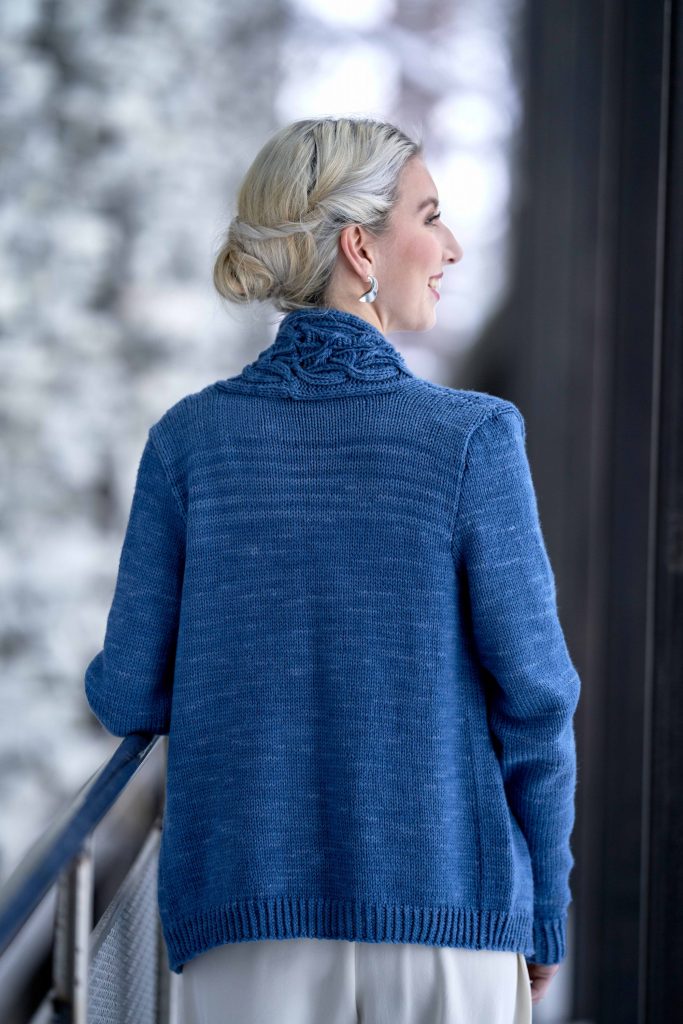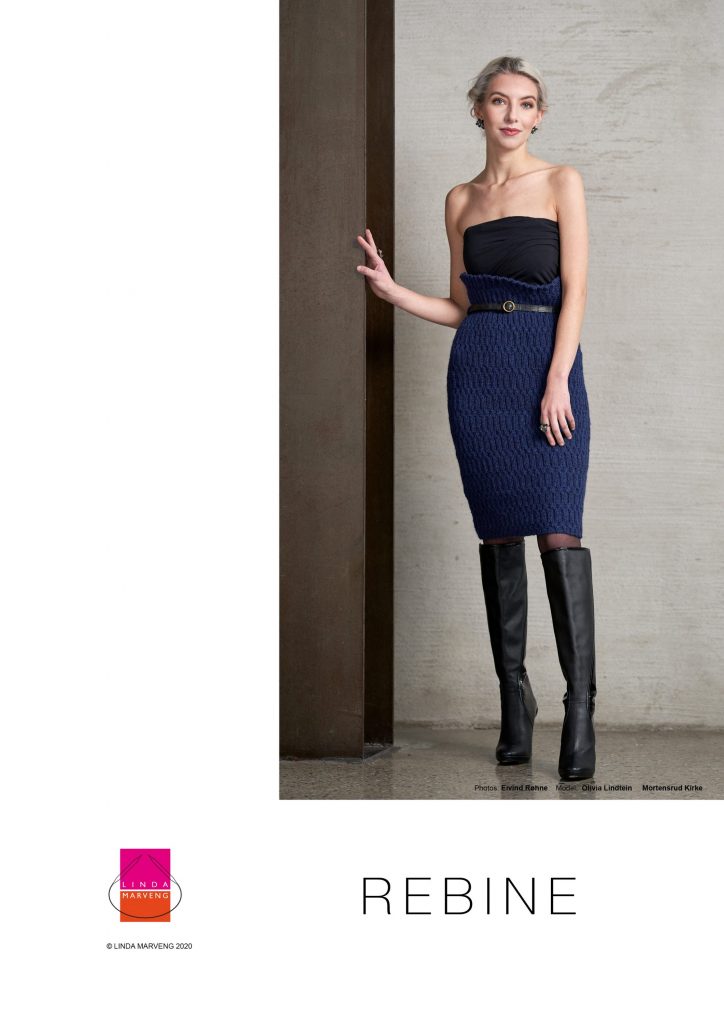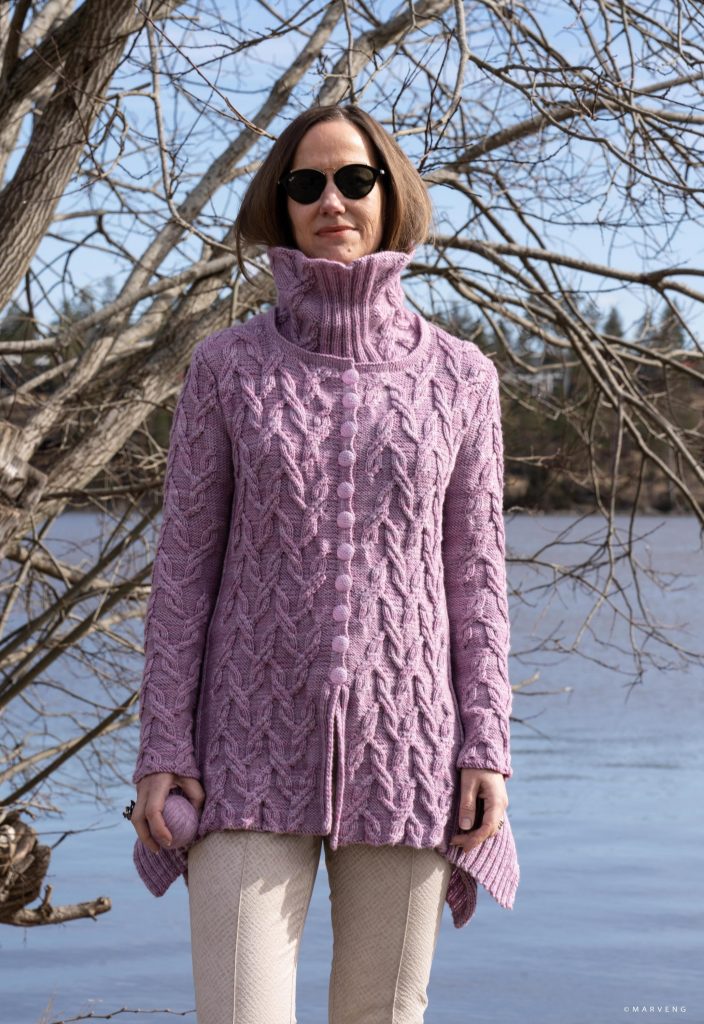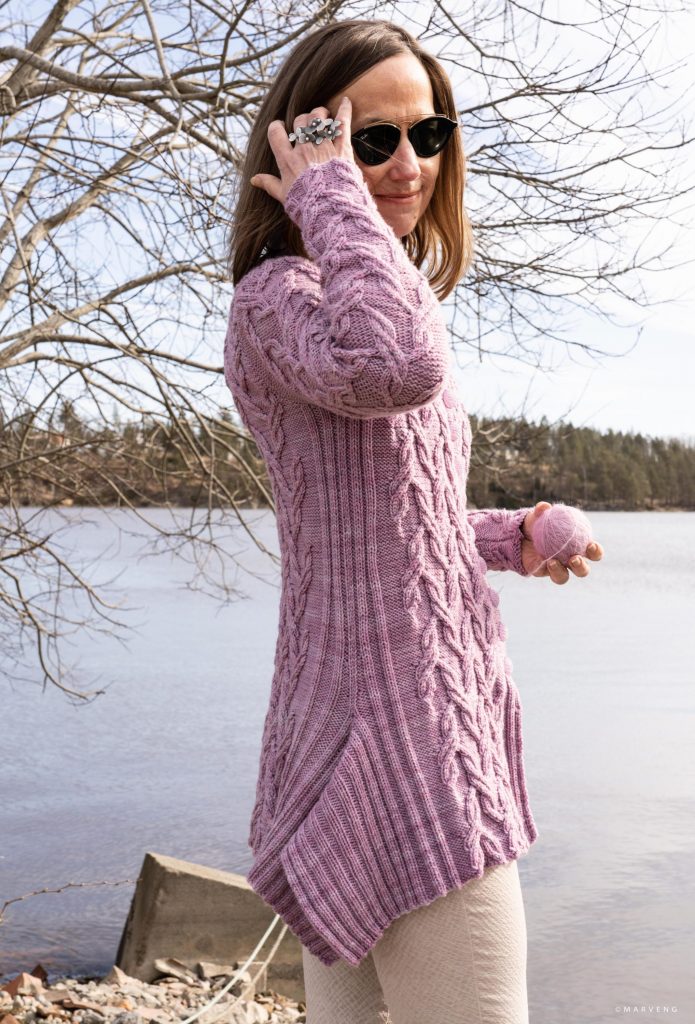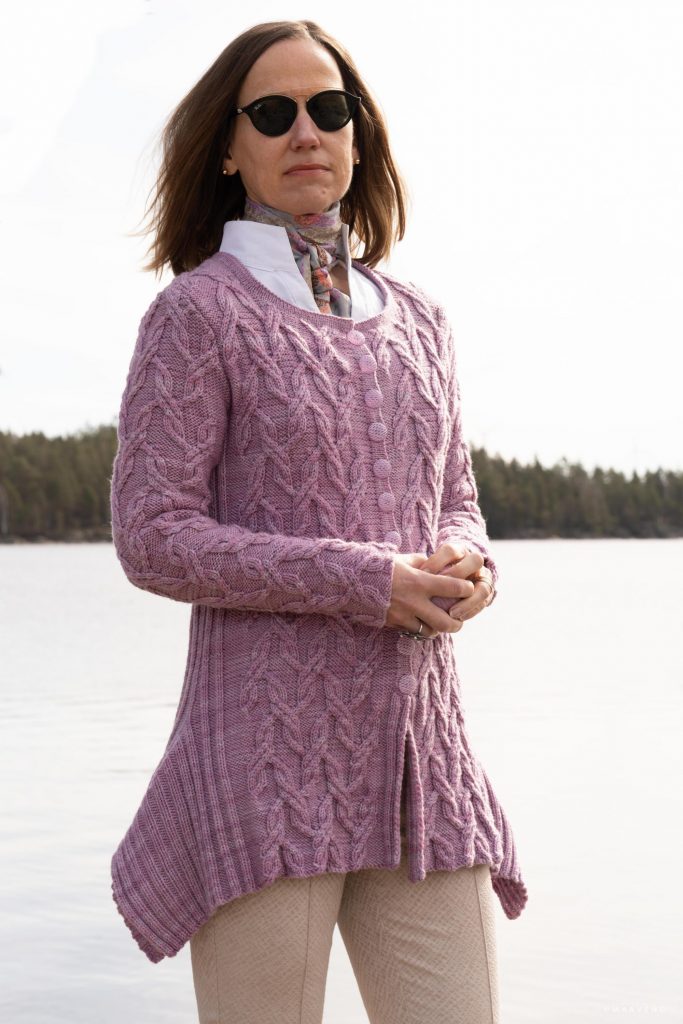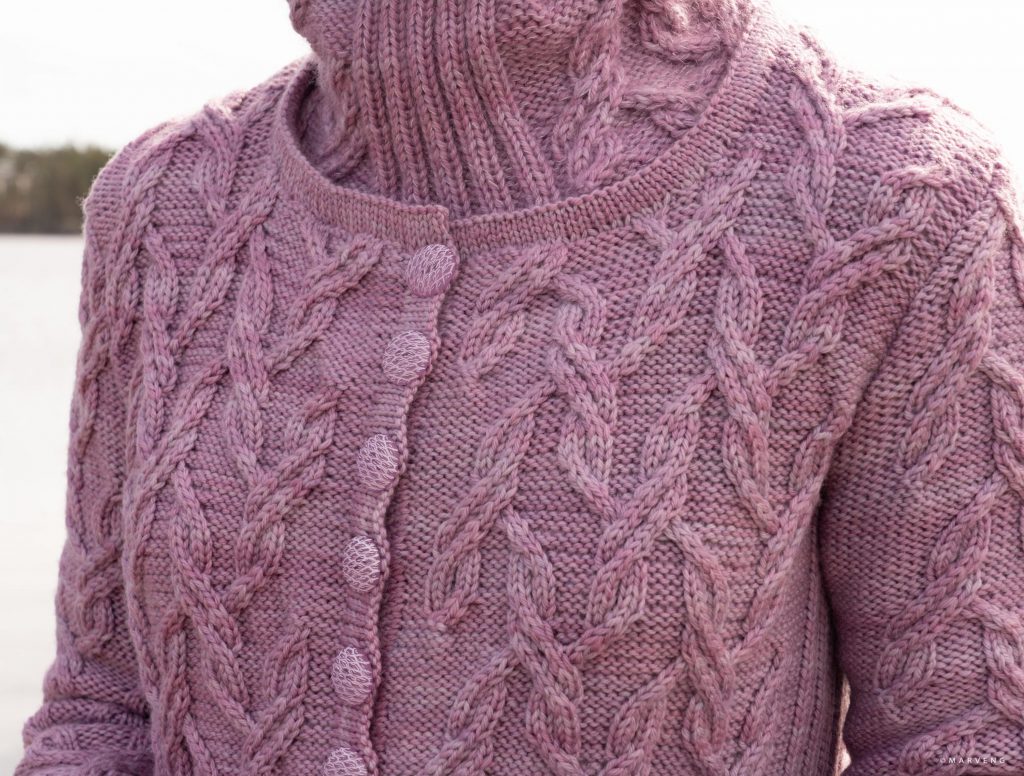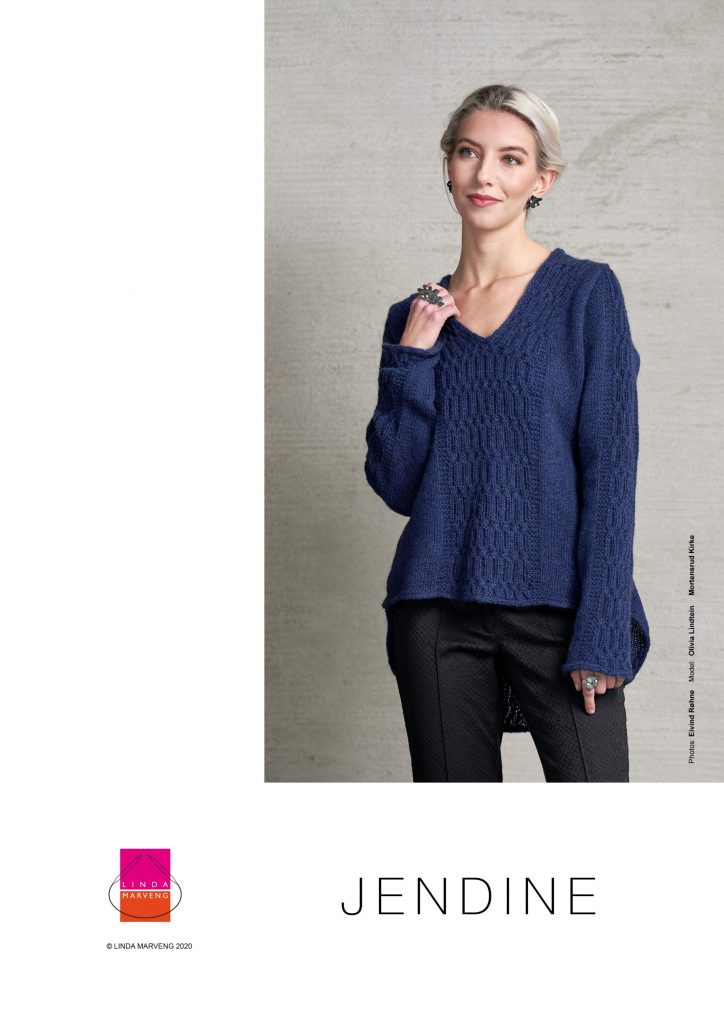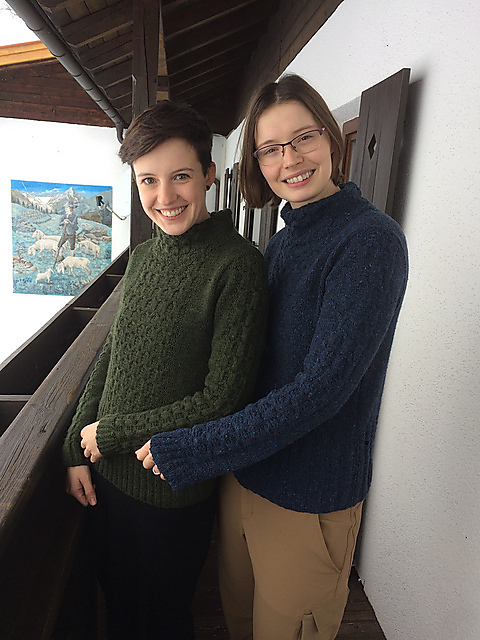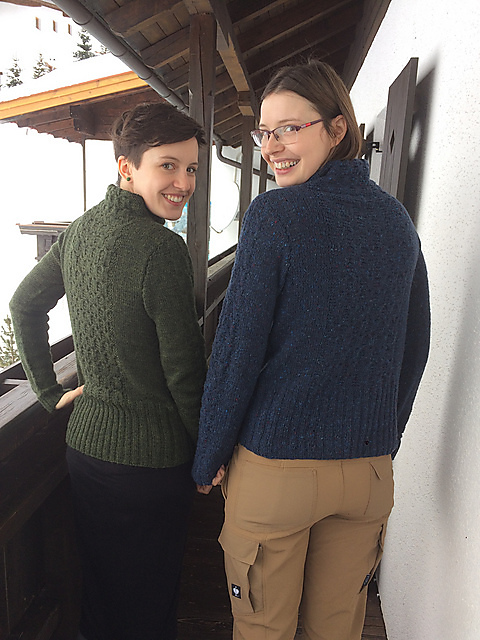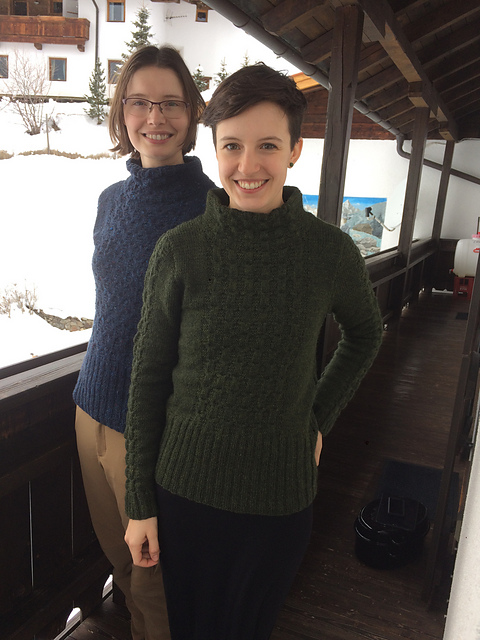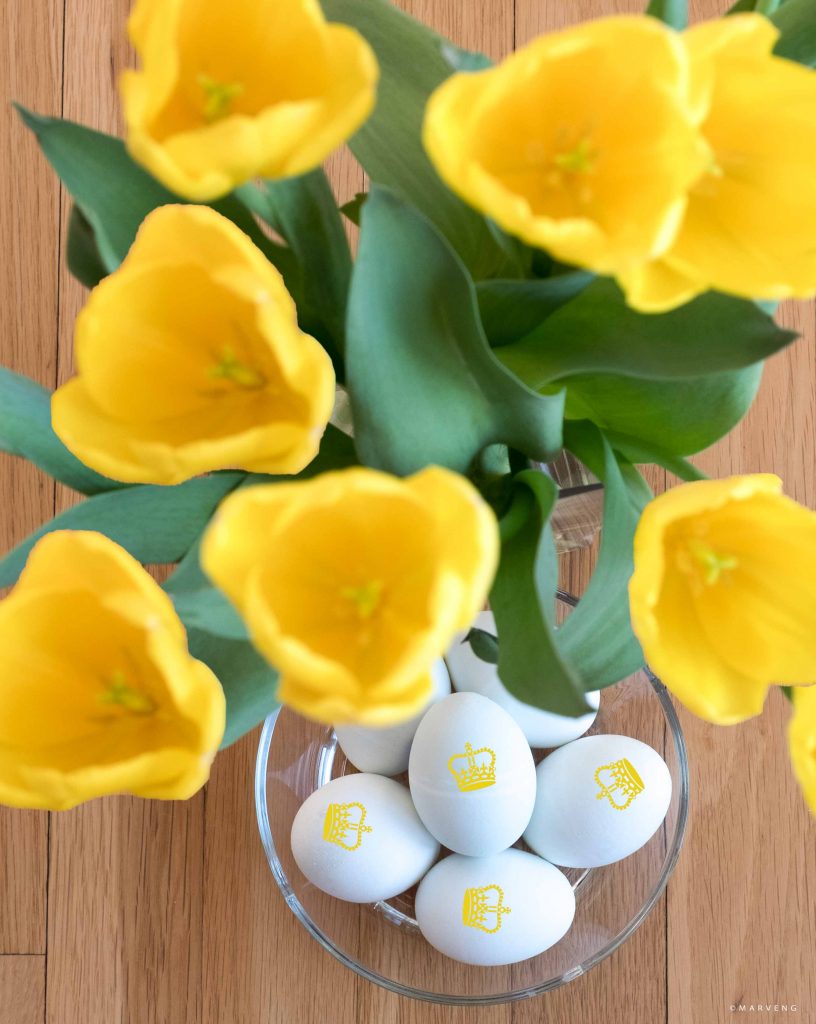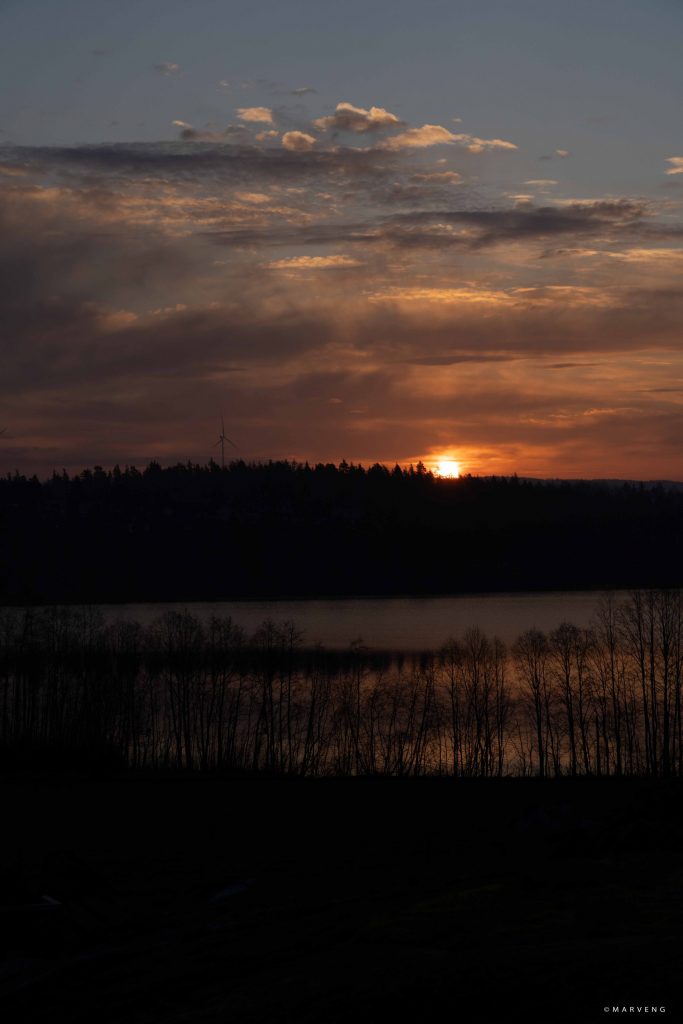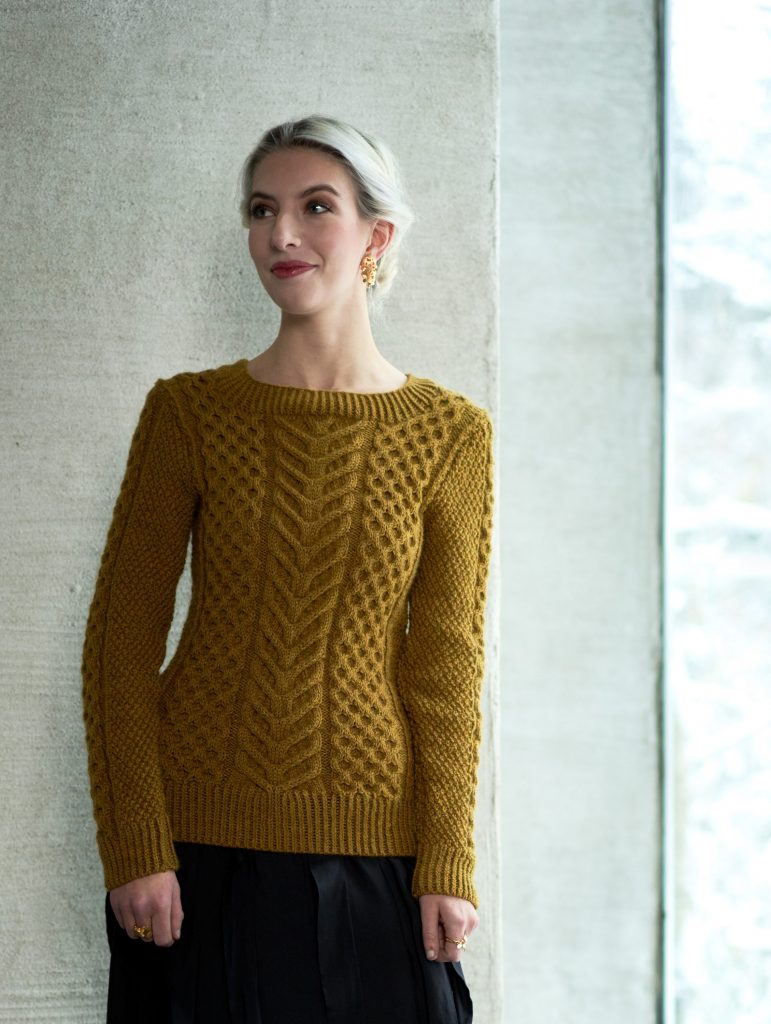 The test knit of Grian is over and the English pattern, in sizes XS to 5XL, has been released in my Ravelry store. My brilliant test knitters corrected and improved the pattern in addition to making some wonderful versions of the pullover! Above you see it worn by the gorgeous Olivia Lindtein, with make-up & hair styling by Erica Poppe and jewellery by Kaja Gjedebo Design, photographed by Eivind Røhne in Mortensrud Church back in November last year.
The test knit of Grian is over and the English pattern, in sizes XS to 5XL, has been released in my Ravelry store. My brilliant test knitters corrected and improved the pattern in addition to making some wonderful versions of the pullover! Above you see it worn by the gorgeous Olivia Lindtein, with make-up & hair styling by Erica Poppe and jewellery by Kaja Gjedebo Design, photographed by Eivind Røhne in Mortensrud Church back in November last year.
Named after the Faery Goddess from County Tipperary, is this pullover with heavy cabled texture. Grian means sunny, from her days as a regional sun deity, perfectly suited for this pullover. Honeycomb and stag horn cables adorn the body, while only honeycomb rule on the sleeves. Grian is slightly fitted with a crew neck and has a high cowl as a collar. The Fibre Co. Cumbria makes the cables pop and allow the texture to shine in all its glory.
Sizes: XS (S, M, L, XL, 2XL, 3XL, 4XL, 5XL)
Shown in size Small.
Skill level: Experienced.
Finished measurements:
Bust/hip: 84 (92, 100, 108, 116, 124, 136, 148, 158) cm/33 (36.25, 39.25, 42.5, 45.75, 48.75, 53.5, 58.25, 62.25)“
Waist: 78 (86, 94, 102, 110, 118, 130, 142, 152) cm/30.75 (33.75, 37, 40.25, 43.25, 46.5, 51.25, 56, 59.75)”
Length: 61 (62, 63, 64, 65, 66, 67, 68, 69) cm/24 (24.5, 24.75, 25.25, 25.5, 26, 26.5, 26.75, 27.25)“
Sleeve length: 48 (49, 49, 49, 50, 50, 50, 50, 50) cm/19 (19.25, 19.25, 19.25, 19.75, 19.75, 19.75, 19.75, 19.75, 19.75, 19.75)”
Cowl: 62 cm/24.5 wide and 20 cm/8” high
Intended ease: + 5-7 cm/2-2.75”. Sample shown is 92 cm/36.25” and worn with + 9 cm/3.5” ease on model.
Yarn: The Fibre Co. Cumbria (60% merino wool, 30% masham wool, 10% mohair, 100 g, 218 m/238 yds). Sample is knitted in Threlkeld:
Pullover: 5 (6, 6, 7, 8, 8, 8, 9, 9) skeins; 1079 (1177, 1275, 1375, 1474, 1574, 1694, 1814, 1934) m/1180 (1287, 1394, 1504, 1612, 1721, 1852, 1984, 2115) yds.
Cowl: 1 skein; 207 m/226 yds.
https://www.thefibreco.com/product/cumbria/
Needles: 4 mm/US 6 straight needles and circular needle (40 cm/16”) for neckband.
Notions: Stitch markers, stitch holders and yarn needle.
Gauge: 20 sts and 28 sts using 4 mm/US 6 needle in st st measures 10 cm/4” square after blocking.
30-sts Staghorn cable measures 10 cm/4” wide after blocking.
24-sts Honeycomb measures 9 cm/3.5” wide after blocking.
Notes: The pullover is worked back and forth in separate pieces and seamed. The cowl is also worked back and forth ending in a an I-cord bind off on both sides.

